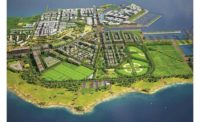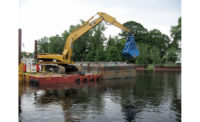A group of former and current residents of Treasure Island, a one-time San Francisco Bay naval base, on Jan. 23 sued consultants Tetra Tech and Shaw Environmental, the U.S. Navy, developer Lennar Inc. and others, seeking $2 billion in damages and an injunction to stop work of some 8,000 residential units there until all alleged toxic and radioactive material at the site is removed.
The class-action suit claims repercussions from exposure to radiation and toxic substances.
The state court suit says managers of a Tetra Tech unit and Shaw were aware that island radiation levels were higher than Navy estimates but chose not to disclose it. The companies remediated island waste and materials, but they claim the Navy directed these not be excavated.
The Navy in 2010 transferred the base to San Francisco for development and claims no radiological health risk.
An irradiated ship docked at the site supported South Pacific nuclear tests between 1946 and 1958. Plaintiffs say contamination levels found in 2007 were three times higher than the Navy reported and cite intentionally ignored safety protocols for toxic removals.
They also claim two state agencies knew of high radiation levels.
Defendants have 30 days to respond.
Separate lawsuits against Tetra Tech related to cleanup of Hunters Point, a former Navy shipyard located onshore that is tied to Treasure Island, are moving slowly, with parties unable to agree on litigation procedures.
All the cases involve two Tetra Tech employees who pleaded guilty in 2018 to falsifying soil contamination documents and were sentenced to federal prison and fined.
But plaintiffs, including the U.S. Justice Dept., claim the fraud was initiated by corporate managers. DOJ specifically cites Andrew Bolt, a Tetra Tech EC senior vice president who became unit president in 2014.
The firm says that a federal Nuclear Regulatory Commission review found no management misconduct.
A university-federal team also said Jan. 17 that its review—at the request of municipal officials of Navy and state protocols to retest radiation levels at two key Hunter's Point site parcels—found they were “appropriate.”




Post a comment to this article
Report Abusive Comment